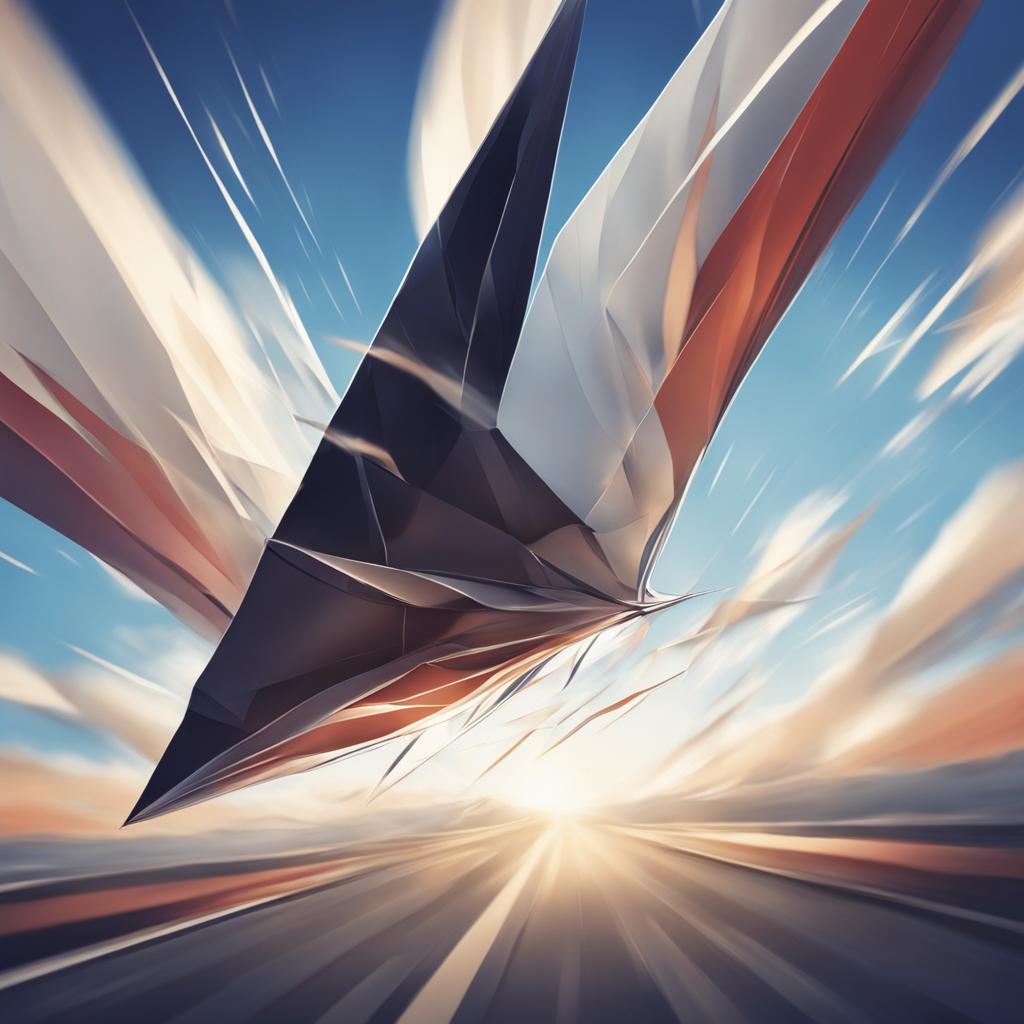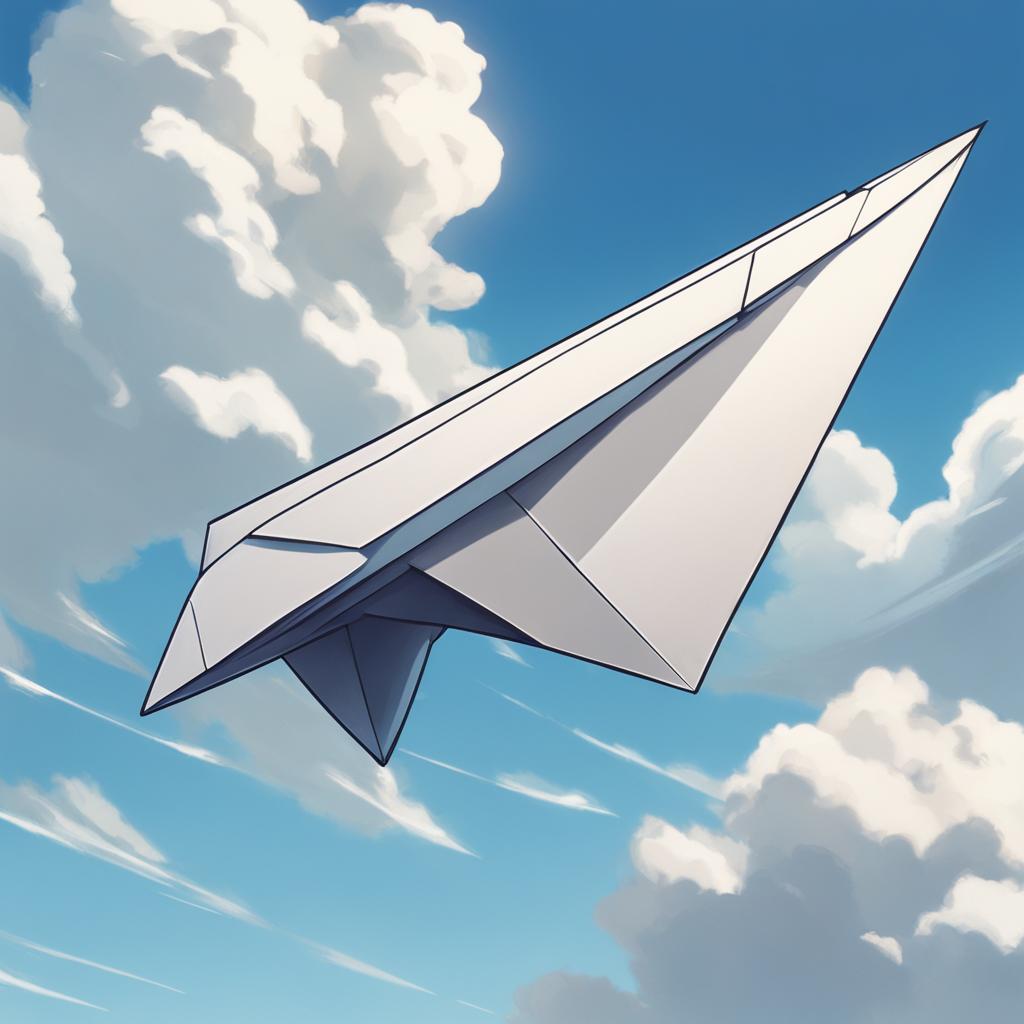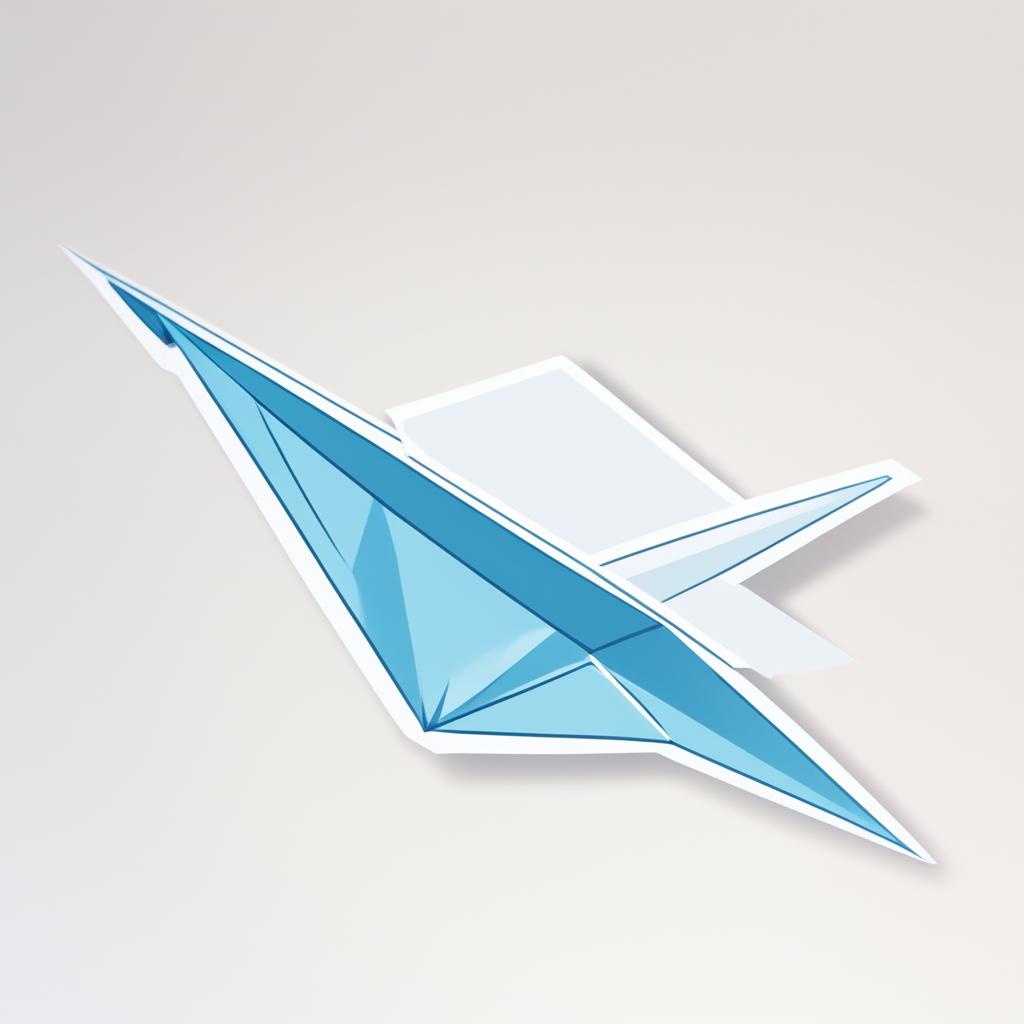Have you ever wondered why your paper plane doesn’t fly as far as you’d like it to? The answer lies in a force called drag. When a paper plane moves through the air, it experiences the resistance created by drag, which slows it down. But how exactly does drag affect a paper plane’s flight? And how can you optimize its performance to make it soar to new heights?
In this article, we will explore the fascinating world of paper plane flight and delve into the effects of drag. By understanding this fundamental force and discovering how to increase or decrease drag, you can unlock the secrets to maximizing your paper plane’s flight distance and overall performance.
Join us on this journey as we uncover the science behind flying paper planes, explore the various forces at play, and provide tips for optimizing your paper plane’s performance. Buckle up, because it’s time to take your paper planes to the next level!
The Forces at Play in Paper Plane Flight
When it comes to the flight of a paper plane, several forces come into play, determining its performance and trajectory. Understanding these forces is key to optimizing your paper plane’s flight experience. Let’s explore the forces of thrust, lift, drag, and gravity that shape the journey of a paper plane:
Thrust
Thrust is the initial force you provide when you throw a paper plane into the air. It propels the plane forward and sets it in motion. The stronger the thrust, the greater the acceleration of the plane, which can affect its overall flight distance.
Lift
Lift is the upward force generated by the air flowing over and under the wings of the paper plane. As the plane moves forward, the wings create a pressure difference, causing the air to exert an upward force on the plane. This force counteracts the pull of gravity and keeps the plane in the air. The design and shape of the wings play a significant role in generating lift.
Drag
Drag is the force that opposes the motion of the paper plane. As the plane moves through the air, the air molecules collide with its surface, creating resistance. This resistance, known as drag, slows down the plane’s forward motion. Different factors, such as the shape and surface area of the plane, can influence the amount of drag it experiences.
Gravity
Gravity is the force that pulls the paper plane downward towards the Earth. The weight of the plane, resulting from the force of gravity, affects its flight characteristics. A heavier plane may experience a greater downward force, while a lighter plane may be more easily affected by external forces, such as wind.
These forces work together to determine how well a paper plane flies. By understanding the roles of thrust, lift, drag, and gravity, you can experiment with different designs and techniques to optimize the performance of your paper planes.
Exploring the Effects of Drag on Paper Plane Flight

To understand the impact of drag on paper plane flight, you can experiment with modifying the plane’s design to increase the amount of drag it experiences. One method is to cut slits on the wings and fold up the cut sections, thereby creating flaps that increase drag.
By throwing the modified paper plane multiple times and comparing its flight distance with the original design, you can observe how increased drag affects the plane’s performance in terms of distance covered.
Increasing drag can lead to changes in the flight characteristics of a paper plane. The modifications in the design create additional surfaces that increase the interaction between the plane and the air, thus altering its aerodynamic properties.
| Design Modification | Flight Distance |
|---|---|
| Original Design | 5 feet |
| Modified Design with Flaps | 3 feet |
In the experiment above, the paper plane with the modified design experienced a reduced flight distance compared to the original design. This is because the increased drag created by the flaps slowed down the plane’s forward motion.
By exploring how drag influences the flight distance of paper planes, you can gain insights into the importance of minimizing drag for maximizing performance and achieving longer flights.
Factors Affecting Paper Plane Flight
Besides drag, there are several factors that can influence the flight of a paper plane. These factors include the construction material of the plane, the angle at which it is launched, and the atmospheric conditions in which it flies.
Construction Material: The type of paper used to construct the plane can significantly impact its performance. Different types of paper have varying levels of weight, stiffness, and aerodynamic properties. Experimenting with different paper materials can help you find the optimal combination for your paper plane’s flight.
Angle of Lift Off: The angle at which you launch a paper plane, known as the angle of lift off, plays a crucial role in determining its flight characteristics. Launching the plane at a higher or lower angle can affect its lift, drag, and overall stability. Adjusting the angle of lift off during experimentation can help you optimize your plane’s flight performance.
Atmospheric Conditions: Atmospheric conditions, such as wind and air density, can also impact the flight of a paper plane. Wind can influence the plane’s trajectory and stability, while air density can affect its lift and drag. Paying attention to the prevailing atmospheric conditions when flying your paper plane can help you anticipate and adapt to their effects.
| Factors | Influence on Paper Plane Flight |
|---|---|
| Construction Material | Impacts performance, weight, and aerodynamics |
| Angle of Lift Off | Determines lift, drag, and stability |
| Atmospheric Conditions | Affects trajectory, lift, and drag |
Understanding these factors and how they interact can help you fine-tune your paper plane’s design and flight characteristics for better performance. By experimenting with different construction materials, adjusting the angle of lift off, and considering the atmospheric conditions, you can enhance the flight experience and optimize the performance of your paper planes.
Tips for Optimizing Paper Plane Performance

If you want to maximize the performance of your paper planes and achieve the best results, here are some useful tips to follow.
-
Use the Best Paper Airplane Design: Make sure you are using a tried-and-tested paper airplane design that is known for its excellent flight characteristics. Experiment with different designs to find your favorite. Remember, not all paper airplanes are created equal!
-
Consistent Launch Force: Maintain a consistent launch force for each throw. By throwing the planes with the same amount of force every time, you can eliminate variables that may affect their flight performance. This will allow you to accurately compare the results and make adjustments as needed.
-
Mark Your Distance: Use the same distance markers for each flight test. This will ensure fair and consistent measurement of the flight distance. Whether it’s meters or feet, choose a unit of measurement that works best for you and stick to it.
-
Experiment with Different Sizes and Materials: Try making paper planes of different sizes and using various types of paper. This will help you understand how size and material affect the flight characteristics. Record your observations to identify trends and patterns.
By following these tips, you can fine-tune your paper airplane designs and optimize their performance for maximum distance and stability.
Remember, the key is to experiment, observe, and iterate. Keep refining your paper plane designs based on your findings, and don’t hesitate to try new ideas. The more you explore and learn, the better your paper planes will fly!
Different Types of Paper
| Design | Size | Material | Flight Distance |
|---|---|---|---|
| Design 1 | Large | Construction Paper | 16 meters |
| Design 2 | Medium | Printer Paper | 12 meters |
| Design 3 | Small | Newspaper | 8 meters |
The Science of Flying Paper Planes
Flying a paper plane is not just a fun activity; it also involves understanding the science behind its flight. There are four key forces at play: thrust, lift, drag, and gravity. Let’s take a closer look at each of these flight forces and how they contribute to the physics of paper plane flight.
Thrust:
Thrust is the force that propels the paper plane forward. When you give the plane a push, you provide it with thrust, setting it in motion through the air. The greater the force of thrust, the faster the plane will fly.
Lift:
Lift is the force that opposes gravity and keeps the paper plane airborne. As the plane moves forward, the air flowing over and under its wings generates an upward force called lift. This lift force helps the plane stay aloft and counteracts the pull of gravity.
Drag:
Drag is the force that acts against the motion of the paper plane. As the plane glides through the air, the air molecules push against its surface, creating resistance. This resistance is known as drag and it slows down the plane’s movement. Minimizing drag is crucial for optimizing the flight performance of a paper plane.
Gravity:
Gravity is the force that pulls the paper plane downward. It is a constant force that acts on the plane, trying to bring it back to the ground. The lift force created by the wings must exceed the force of gravity for the paper plane to stay in the air.
By considering the interplay of these flight forces – thrust, lift, drag, and gravity – you can gain a deeper appreciation for the science behind the flight of paper planes. Understanding how to optimize these forces is key to achieving better flight performance and creating paper planes that soar through the air with elegance.
Conclusion
Understanding how drag affects a paper plane is key to optimizing its flight performance. By modifying the plane’s design to increase drag, experimenting with different factors, and following tips for optimal performance, you can enhance the distance and overall flight experience of your paper planes.
Modifying the design of your paper plane to increase drag can be a fun science experiment. By cutting slits on the wings and folding up the cut sections to create flaps, you can observe how increased drag affects the plane’s flight distance. This hands-on approach allows you to explore the impact of various design modifications on the plane’s performance.
Additionally, considering factors such as the construction material of the plane, the angle of lift off, and atmospheric conditions can help you fine-tune your paper planes. Experiment with different types of paper and sizes to see how they affect flight characteristics. Aim for consistent launch force and measure the flight distances using the same markers for accurate comparison.
The science of flying paper planes opens up a world of possibilities for exploring flight forces such as thrust, lift, drag, and gravity. By delving into these concepts, you can gain a deeper understanding of the physics behind paper plane flight. As you optimize your paper plane’s flight, you not only have fun but also engage in a fascinating science experiment that sparks curiosity and learning.
FAQ
Q: How does drag affect a paper plane?
A: Drag is a force that slows down a paper plane as it moves through the air. It is caused by the air pushing against the plane in opposition to its forward motion. By understanding drag, you can learn how to optimize the flight performance of a paper plane.
Q: What forces are at play in paper plane flight?
A: The forces at play in paper plane flight include thrust, lift, drag, and gravity. Thrust is the forward push provided when the plane is thrown. Lift is the upward force generated by the air flowing over and under the plane’s wings. Drag is the force of the air pushing against the plane, which slows it down. Gravity pulls the plane downwards.
Q: How can I experiment with the effects of drag on paper plane flight?
A: To observe the impact of drag on paper plane flight, you can modify the plane’s design to increase the amount of drag it experiences. One method is to cut slits on the wings and fold up the cut sections to create flaps. By comparing the flight distance of the modified plane with the original design, you can see how increased drag affects its performance.
Q: What factors can influence paper plane flight?
A: Several factors can influence paper plane flight. The construction material of the plane, such as different types of paper, can impact its performance. The angle at which the plane is launched, known as the angle of lift off, can also affect its flight characteristics. Additionally, atmospheric conditions like wind can influence how the plane flies.
Q: What tips can help optimize paper plane performance?
A: To optimize paper plane performance, consider using the same distance markers each time you test the flight distance for consistent measurement. Aim to throw the plane with a similar amount of force for each launch. Experiment with making paper planes of different sizes and using different types of paper to observe their flight characteristics.
Q: What is the science behind flying paper planes?
A: Flying a paper plane involves understanding the science of its flight. The forces of thrust, lift, drag, and gravity all play a role. Thrust propels the plane forward, while lift counters the force of gravity and keeps the plane airborne. Drag slows down the plane’s motion as it moves through the air. By considering these flight forces, you can gain a deeper understanding of the physics behind paper plane flight.
Q: What can I conclude about paper plane flight?
A: By understanding how drag affects a paper plane, you can optimize its flight performance. Experimenting with modifications to increase drag, exploring different factors like construction material and launch angle, and following tips for optimal performance can enhance the distance and overall flight experience of your paper planes. Flying paper planes is not only fun but also provides a hands-on educational experience in the science of flight.
